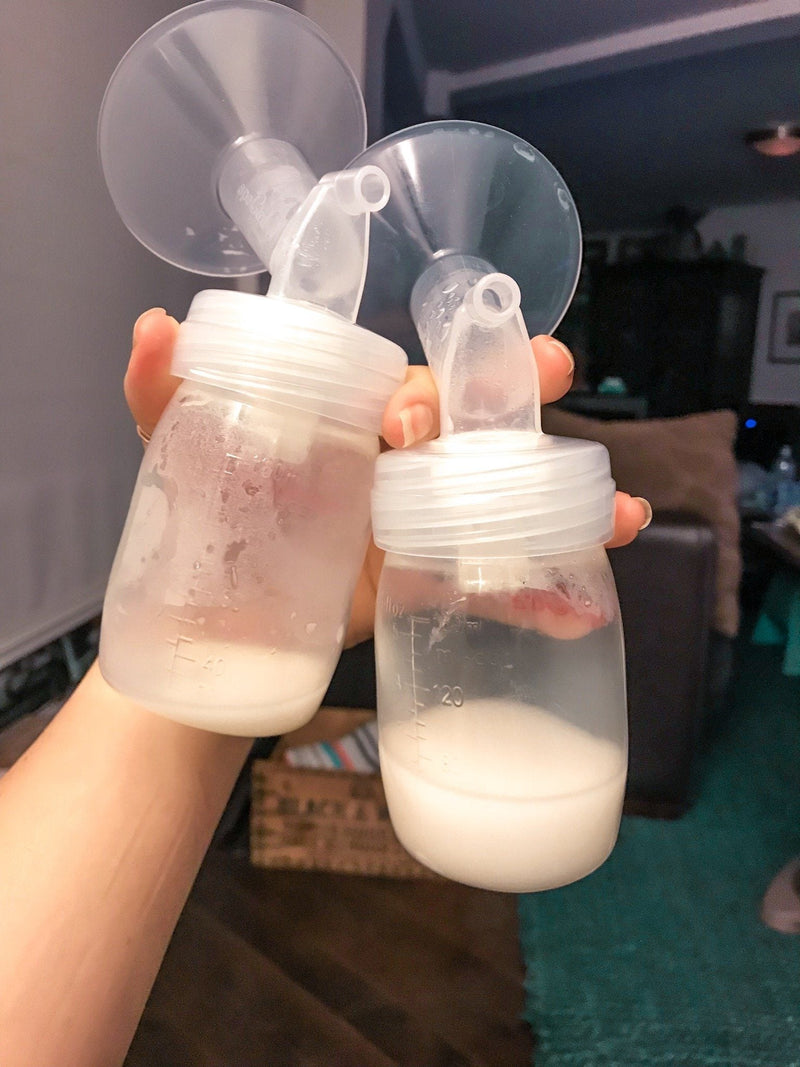
It's quite normal for a new mom to worry that she is not producing enough milk for her newborn, although she probably is.
Breastfeeding is a beautiful and natural way to nourish your baby—but sometimes, milk supply doesn’t always meet the demand. If you're feeling concerned about your production, you're not alone. The good news? There are proven, expert-backed methods to help increase your breast milk supply.
This guide will walk you through techniques including power pumping, switch nursing, diet, hydration, and common mistakes to avoid. Whether you're a stay-at-home mom, a working mama, or somewhere in between, these practical and medically supported strategies can help.
Explore nursing tank tops, tees, and nursing sweatshirt designs that work for easier feeding.
If this is the case for you, there are a few quick ways to check:
- confirm with your physician that baby is gaining weight
- wets five to eight diapers a day
- looks healthy and alert
- and has yellowy poos that lighten in color about five days after birth
- burps and gives cues that he or she is full
However, if you still feel that you want to increase your breast milk production, the following tips may help.
1. Pumping to Increase Breast Milk
Pumping in addition to breastfeeding can boost your supply significantly. The key is consistency. Your body produces milk based on demand—more demand signals more supply.
Daily Pumping Strategy
- Pump for 15 minutes after nursing to mimic a baby’s growth spurt behavior.
- Try to pump at the same time each day to build a reliable rhythm.
- If you can’t pump right after feeding (baby might need you), aim for a quiet time later in the day or at night.
Power Pumping Protocol Power pumping mimics cluster feeding and is designed to dramatically increase milk supply in a short time.
Sample Power Pumping Schedule:
- Pump 20 minutes
- Rest 10 minutes
- Pump 10 minutes
- Rest 10 minutes
- Pump 10 minutes
Do this once daily for 3–7 consecutive days. Evening sessions while your baby sleeps or during downtime in front of the TV can make it more manageable.
Pro Tip: Wear soft, easy-access nursing tanks or nursing t shirts to make pumping easier, especially for moms on the go or at work.
2. Switch Nursing
Switch nursing encourages your baby to stay actively feeding and helps stimulate both breasts more effectively.
How to Do It:
- Switch breasts as soon as baby slows down or gets sleepy.
- Go back and forth until both breasts have been stimulated at least twice.
- Let baby finish on either breast for comfort and fullness.
Emptying the breast helps trigger your body to refill. Typically, 15-20 minutes per breast ensures stimulation and milk removal.
3. Nutrition & Hydration: The Foundation of Milk Supply
Breast milk is 88% water, so staying hydrated is crucial. Drink at least 2 liters of water daily or aim to sip 8 ounces each time you nurse.
Hydration Boosters:
- Coconut water
- Herbal lactation teas
- Homemade soups and broths
Nutrient-Rich Foods for Lactation:
- Healthy fats: avocados, nuts, seeds, almond butter
- Whole grains: oats, quinoa, brown rice
- Protein: lentils, beans, chicken, salmon
- Galactagogues (milk boosters): fenugreek, brewer’s yeast, flaxseeds
Lactation Smoothie Idea:
- Unsweetened almond milk
- Oats
- Banana
- Brewer’s yeast
- Nut butter
- Handful of spinach
4. What to Avoid That May Decrease Milk Supply
Avoid Excessive Pacifier Use: Pacifiers can reduce how often your baby suckles at the breast, leading to less stimulation and lower supply.
Formula Supplementing: Occasional supplementing won't harm your supply, but regular bottle feeding instead of nursing will reduce your body’s milk-making cues. If supplementing, always nurse first to empty your breasts.
Scheduling Feedings Too Rigidly: Breastfeeding works best when it’s on demand. Newborns especially may need to nurse every 1.5–2 hours—and that’s okay! It helps increase supply and keep baby satisfied.
Restrictive Dieting: Don’t cut calories drastically. Your body needs extra energy to create milk. Eat balanced meals and listen to your hunger cues.
5. Pumping at Work: Tips for the Working Mama
- Pump every 3 hours if possible
- Store milk in clearly labeled bags
- Use a hands-free pump for convenience
- Wear clothing that makes nursing and pumping easy
Tip: Shop USA-made maternity and nursing tops that let you pump with ease while staying stylish and comfortable.
6. When to Talk to a Lactation Expert
If you:
- Are still worried about your supply
- Experience pain while nursing
- Feel baby is not gaining weight
Then it’s time to consult a lactation consultant or your OBGYN. They can assess latch, milk transfer, and offer customized support.
Milk supply can fluctuate, but with the right strategies and support, you can improve it. Your body is biologically designed to feed your baby. As long as you are nursing or pumping 10 to 12 times per day, you're on track!
Your milk even changes when baby is sick to boost their immunity. It's truly amazing what your body can do.
You’ve got this, mama. Keep going. You may even end up with enough milk to donate and help another baby thrive!
Explore More from Bun Maternity:
- Feel-good nursing clothes and inspirational mom graphic tees to take you from bump to beyond
- Increase Breast Milk
- 7 Things Pregnant Moms Should Never Feel Pressured Into Doing
Join the Bun Maternity community for more real talk, expert tips, and mama-powered inspiration.
















0 comments